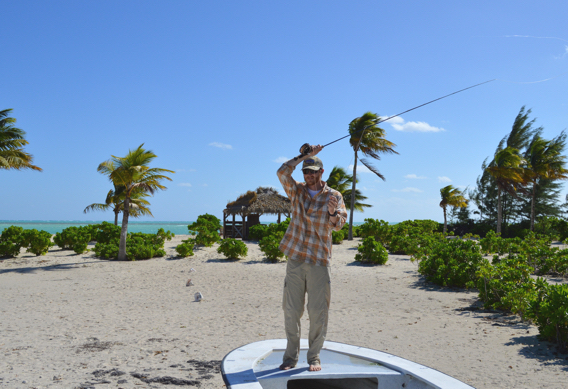In today’s episode of Deneki Chronicles, we discuss and show you how to use the off-shoulder cast on windy days at Andros South Lodge. Presenting a fly with the wind blowing on your casting shoulder can be a challenge. Therefore why not learn a technique to maximize to enhance your bonefishing experience?

Presenting the fly with the wind blowing hard onto your casting shoulder (blowing onto your right side for right-handed casters or left side for left-handed casters) is arguably the most difficult cast in fly fishing. With each subsequent false cast, the wind force pushes the fly line (and thus fly) closer and closer to the caster making for a difficult and potentially dangerous casting situation.
Changing wind conditions are extremely common on the flats. Therefore, it’s helpful to be comfortable with a variety of casts to deal with wind from any direction.
One of the most effective casts for dealing with wind on your casting side is a simple back cast presentation – making a forward cast directly opposite your target and presents the fly to the fish on the backcast. A backcast presentation is a great tool for turning over a fly in a heavy cross-wind, particularly at medium to long distances; however, we find many anglers struggle to present the fly quickly and accurately on the back cast at shorter distances.
Therefore, we also recommend that anglers practice casting with their fly line off of their opposite shoulder and using a simple cast called… Wait for it… The off-shoulder cast!
The Off-Shoulder Cast
Although it may feel a bit awkward at first, casting off of your opposite shoulder is a great tool for shorter shots when the wind is on your right shoulder (or on your left shoulder for you lefties). It’s quick, allows you to keep your eye on your target (thus making it more accurate), and keeps the fly traveling safely away from your body. With a little practice, it’s also not as difficult as many anglers realize… Here’s how it works.
For Short Casts



Note: Because we’re talking short casts here, stopping at your opposite shoulder on your backcast typically allows a long enough stroke for an efficient cast. However, for longer casts, an adjustment must be made, which we’ll discuss below.
For Medium-Long(ish) Casts



Leave a Reply